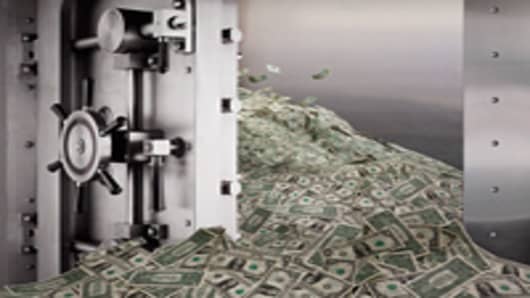Are banks facing a rude earnings awakening?
With JPMorgan and Wells Fargo on tap to report this week, some investors may be questioning whether the depletion of loan loss reserves — the money banks set aside to pay for loans that turn sour — is too premature as credit quality keeps improving. (Read More: 10 Big Bank Stocks Gearing Up for Third-Quarter Earnings.)
A recent report from the Federal Deposit Insurance Corporation showed that banks’ quarterly provisions, or the amount that banks are allocating to these bad loans, have slowed to pre-crisis levels. In the second quarter, the amount set aside by U.S. banks reached its lowest total in five years.
That trend has raised serious concerns among key banking regulators — including those at the Office of the Comptroller of the Currency.
In late September, OCC chief Thomas Curry warned banks that “too much of the increase in reported profits is being driven by loan loss reserve releases” and that the issue “has to be a matter of great concern” as risk levels remain elevated for the industry.
Citigroup — which at the peak contributed the most of any bank, $12.7 billion, to these allowances — released the most from its reserves in the last quarter. Citi cut contributions by $1.4 billion, roughly 5 percent of its $27.6 billion reserves, according to regulatory filings.
For the same period, Bank of America cut $2 billion from its reserves, which totaled roughly $31 billion in the second quarter. Bank of America’s reserves cover mortgages as well as U.S. credit cards and consumer loans.
Similarly, JPMorgan Chase cut $2 billion from its $24.6 billion in reserves, and Wells Fargo slashed $500 million, though the San Francisco-based bank still keeps $18.6 billion on hand for bad consumer loans.
In aggregate, all banks contributed $14.2 billion to loan loss provisions in the second quarter, down 80 percent from the $71.2 billion high in the fourth quarter of 2008. While it’s conventional wisdom to think that payments would slow as the economy treads farther away from the financial crisis, the overall credit environment hasn’t improved at the same pace. (Read More: CitiMortgage CEO on Tight Credit: 'There's Nothing Wrong with People Making Profits'.)
Data released last week by the American Banker’s Association show consumer default rates on bank credit cards fell to 2.93 percent, an 11-year low, for the most recent quarter surveyed.
However, delinquencies increased in eight other categories: most notably, rising in home equity loans, to which most banks still have sizeable exposure.
While it’s one tactic to use excess reserves to bulk up earnings in a lackluster, low-yield environment, it’s another risk entirely to start whittling down contributions to these allowances before broader improvements are seen. (Read More: 5 Most Lean and Mean Bank Stocks.)
By the end of the week, we should see whether banks are in fact putting the cart before the horse.
Correction: An earlier version of the story said Citibank cut $2.3 billion of its reserves last quarter. That figure is inaccurate, and should be $1.4 billion.
—By CNBC's Kayla Tausche and Jesse Bergman
Follow them on Twitter@KaylaTausche,@JBergmanCNBC



